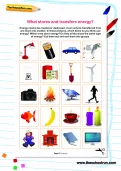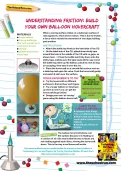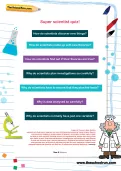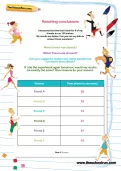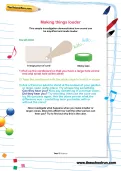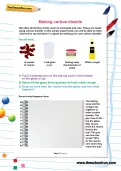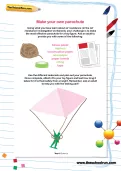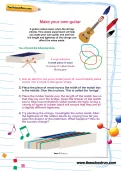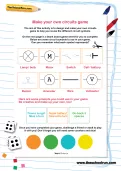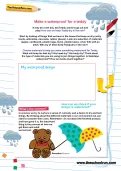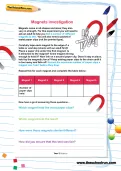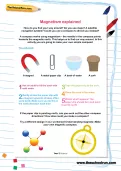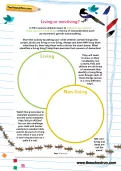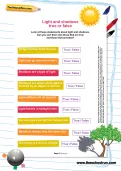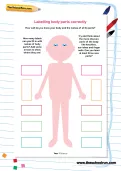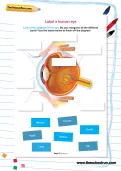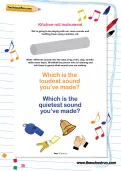This simple investigation demonstrates how sound can be amplified and made louder.
or
Register to add to your saved resources
Already a subscriber? to view this content.
We often drink fizzy drinks such as lemonade and cola. These are made using carbon dioxide. In this simple experiment, you will be able to make raisins dive up and down in a glass by making your own carbon dioxide!
or
Register to add to your saved resources
Already a subscriber? to view this content.
Build your own water cycle and investigate reversible and irreversible changes.
or
Register to add to your saved resources
Already a subscriber? to view this content.
A sundial tells the time by using the position of the sun. This is how it works: the sun casts a shadow onto a surface marked with lines indicating the hours of the day. As the sun moves across the sky
the shadow aligns with different hour-lines. Do you think you can make your own sundial?
or
Register to add to your saved resources
Already a subscriber? to view this content.
Using what you have learned about air resistance, your challenge is to make the most effective parachute for a toy figure.
or
Register to add to your saved resources
Already a subscriber? to view this content.
A guitar makes music when the strings vibrate. This simple experiment will help you make your own guitar and see how the length and tightness of the strings can affect the notes made.
or
Register to add to your saved resources
The aim of this game is to make as many food chains as possible.
or
Register to add to your saved resources
The aim of this activity is to design and make your own circuits game to help you revise the different circuit symbols.
or
Register to add to your saved resources
Already a subscriber? to view this content.
It may be a wet day, but Teddy wants to go out and play! How can we keep Teddy dry in the rain? Let's choose materials to help make something waterproof for Teddy.
or
Register to add to your saved resources
Already a subscriber? to view this content.
Look at these pictures of the different planets and the sun in our solar system. What information can you remember about each one? Do you know any interesting facts about each planet? If not, can you use books, talking to people or your online research skills to find out an interesting fact for each? Record your fact below each one.
or
Register to add to your saved resources
Already a subscriber? to view this content.
Magnets come in all shapes and sizes; they also vary in strength. This experiment will test the magnetic force of a variety of different magnets.
or
Register to add to your saved resources
Already a subscriber? to view this content.
How do you find your way around? Do you use maps? A satellite navigation system? Could you use a compass to direct you instead? A compass works using magnetism – the needle in the compass points
towards the magnetic north. This helps us to find our way around. In this activity you are going to make your own simple compass!
or
Register to add to your saved resources
Already a subscriber? to view this content.
Mix some paper clips up with some rice and put them in a closed, see-through plastic container. Using a magnet, how long does it take you to separate the paper clips from the rice without opening the container? Now set up a maze made of cardboard. Can you guide a magnetic ball or marble through the maze from the outside of box, using your magnet?
or
Register to add to your saved resources
Find a glass jar. Put a selection of magnetic and non-magnetic materials inside. Close the jar and then, using your magnet, see if you can separate the magnetic materials without opening the jar.
or
Register to add to your saved resources
Already a subscriber? to view this content.
In KS1 science children learn to differentiate between living and non-living things in terms of characteristics such as movement, growth and breathing. Identify which things are living and which are non-living, but watch out ... sometimes it's not as obvious as it seems!
or
Register to add to your saved resources
Already a subscriber? to view this content.
Look at these statements about light and shadows. Can you sort them into those that are true and those that are false?
or
Register to add to your saved resources
Already a subscriber? to view this content.
This game is designed to help you revise the key stages in different life cycles. The aim of the game is to collect all four stages in each life cycle.
or
Register to add to your saved resources
How many labels can you fill in with names of body parts? Add some arrows to show where they are! Try and think about the more obscure parts of the body. Can you learn at least three new parts?
or
Register to add to your saved resources
Already a subscriber? to view this content.
Look at this diagram of the eye. Do you recognise all the different parts? Use the labels below to finish off the diagram.
or
Register to add to your saved resources
Already a subscriber? to view this content.
We’re going to be playing with our voice sounds and muffling them using a kitchen roll. Make different sounds into the tube (ring a bell, clap, whistle, rattle some keys). Blindfold the person who is listening and ask them to guess what sounds you are making.
or
Register to add to your saved resources
